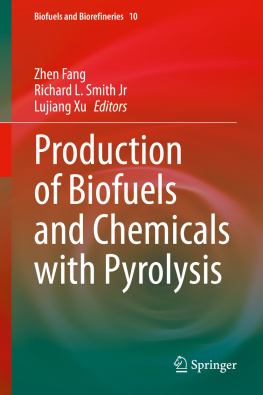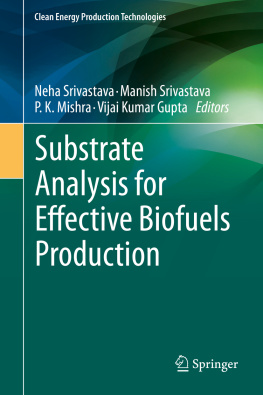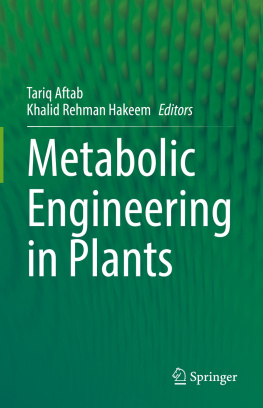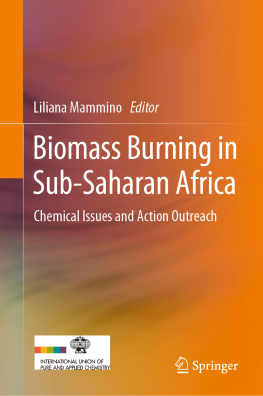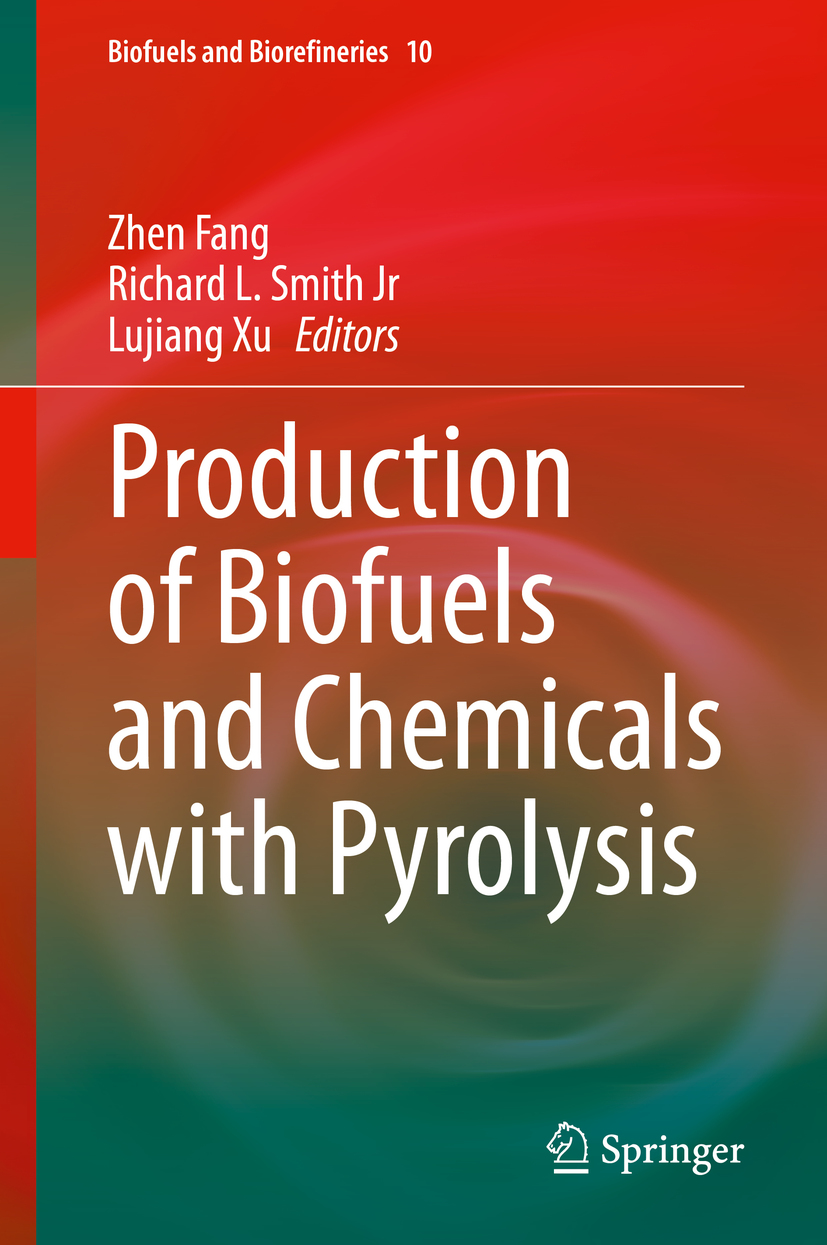Volume 10
Biofuels and Biorefineries
Editor-in-Chief
Zhen Fang
Nanjing Agricultural University, Nanjing, China
Editorial Board
Jamal Chaouki
Polytechnique Montral, Canada
Liang-shih Fan
Ohio State University, USA
John R. Grace
University of British Columbia, Canada
Vijaya Raghavan
McGill University, Canada
Yonghao Ni
University of New Brunswick, Canada
Norman R. Scott
Cornell University, USA
Richard L. Smith Jr
Tohoku University, Japan
Ying Zheng
University of Edinburgh, UK
Aims and Scope of the seriesAnnual global biomass production is about 220 billion dry tons or 4,500 EJ, equivalent to 8.3 times the worlds energy consumption in 2014 (543 EJ). On the other hand, world-proven oil reserves at the end of 2011 reached 1652.6 billion barrels, which can only meet 54.2 years of global production. Therefore, alternative resources are needed to both supplement and replace fossil oils as the raw material for transportation fuels, chemicals and materials in petroleum-based industries. Renewable biomass is a likely candidate, because it is prevalent over the Earth and is readily converted to other products. Compared with coal, some of the advantages of biomass are: (i) its carbon-neutral and sustainable nature when properly managed; (ii) its reactivity in biological conversion processes; (iii) its potential to produce bio-oil (ca. yields of 75%) by fast pyrolysis because of its high oxygen content; (iv) its low sulphur and lack of undesirable contaminants (e.g. metals, nitrogen content) (v) its wide geographical distribution and (vi) its potential for creating jobs and industries in energy crop productions and conversion plants. Many researchers, governments, research institutions and industries are developing projects for converting biomass including forest woody and herbaceous biomass into chemicals, biofuels and materials and the race is on for creating new biorefinery processes needed for future economies. The development of biorefineries will create remarkable opportunities for the forestry sector, biotechnology, materials, chemical processing industry, and stimulate advances in agriculture. It will help to create a sustainable society and industries that use renewable and carbon-neutral resources.
The Biofuels and Biorefineries Series aims at being a comprehensive and integrated reference for biomass, bioenergy, biofuels, and bioproducts. The Series provides leading global research advances and critical evaluations of methods for converting biomass into biofuels and chemicals. Scientific and engineering challenges in biomass production and conversion are covered that show technological advances and approaches for creating new bio-economies in a format that is suitable for both industrialists and environmental policy decision-makers
The Biofuels and Biorefineries Series provides readers with clear and concisely-written chapters that are peer-reviewed on significant topics in biomass production, biofuels, bio-products, chemicals, catalysts, energy policy, economics, thermochemical and processing technologies. The text covers major fields of plant science, green chemistry, economics and economy, biotechnology, microbiology, chemical engineering, mechanical engineering and energy.
Series description
Annual global biomass production is about 220 billion dry tons or 4,500 EJ, equivalent to 8.3 times the worlds energy consumption in 2014 (543 EJ). On the other hand, world-proven oil reserves at the end of 2011 reached 1652.6 billion barrels, which can only meet just over 50 years of global production. Therefore, alternative resources are needed to both supplement and replace fossil oils as the raw material for transportation fuels, chemicals and materials in petroleum-based industries. Renewable biomass is a likely candidate, because it is prevalent over the Earth and is readily converted to other products. Compared with coal, some of the advantages of biomass are: (i) its carbon-neutral and sustainable nature when properly managed; (ii) its reactivity in biological conversion processes; (iii) its potential to produce bio-oil (ca. yields of 75%) by fast pyrolysis because of its high oxygen content; (iv) its low sulphur and lack of undesirable contaminants (e.g. metals, nitrogen content) (v) its wide geographical distribution and (vi) its potential for creating jobs and industries in energy crop productions and conversion plants. Many researchers, governments, research institutions and industries are developing projects for converting biomass including forest woody and herbaceous biomass into chemicals, biofuels and materials and the race is on for creating new biorefinery processes needed for future economies. The development of biorefineries will create remarkable opportunities for the forestry sector, biotechnology, materials, chemical processing industry, and stimulate advances in agriculture. It will help to create a sustainable society and industries that use renewable and carbon-neutral resources.
More information about this series at http://www.springer.com/series/11687
Editors
Zhen Fang
Biomass Group, College of Engineering, Nanjing Agricultural University, Nanjing, Jiangsu, China
Richard L. Smith Jr
Graduate School of Environmental Studies, Tohoku University, Aoba-ku, Sendai, Japan
Lujiang Xu
Biomass Group, College of Engineering, Nanjing Agricultural University, Nanjing, Jiangsu, China
ISSN 2214-1537 e-ISSN 2214-1545
Biofuels and Biorefineries
ISBN 978-981-15-2731-9 e-ISBN 978-981-15-2732-6
https://doi.org/10.1007/978-981-15-2732-6
Springer Nature Singapore Pte Ltd. 2020
This work is subject to copyright. All rights are reserved by the Publisher, whether the whole or part of the material is concerned, specifically the rights of translation, reprinting, reuse of illustrations, recitation, broadcasting, reproduction on microfilms or in any other physical way, and transmission or information storage and retrieval, electronic adaptation, computer software, or by similar or dissimilar methodology now known or hereafter developed.
The use of general descriptive names, registered names, trademarks, service marks, etc. in this publication does not imply, even in the absence of a specific statement, that such names are exempt from the relevant protective laws and regulations and therefore free for general use.
The publisher, the authors and the editors are safe to assume that the advice and information in this book are believed to be true and accurate at the date of publication. Neither the publisher nor the authors or the editors give a warranty, expressed or implied, with respect to the material contained herein or for any errors or omissions that may have been made. The publisher remains neutral with regard to jurisdictional claims in published maps and institutional affiliations.
This Springer imprint is published by the registered company Springer Nature Singapore Pte Ltd.
The registered company address is: 152 Beach Road, #21-01/04 Gateway East, Singapore 189721, Singapore

